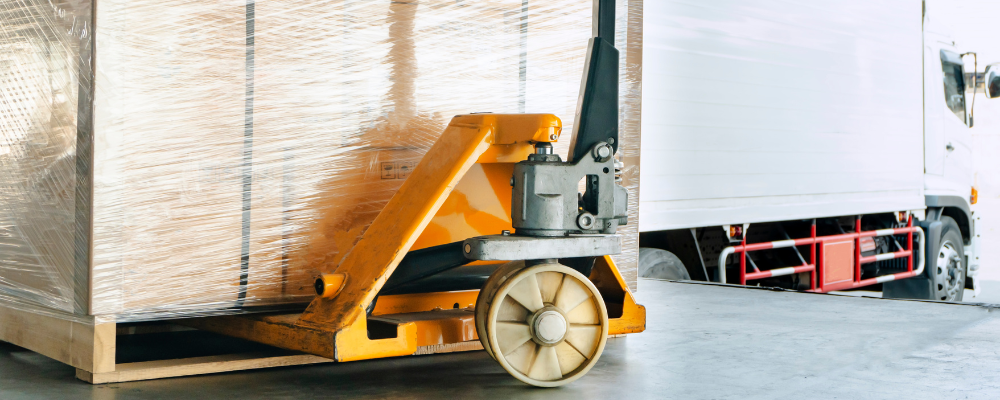By Jim Rabuse | June 17, 2022 0 Comments

What You Need to Know About Pallet Load Containment
Load containment is critical when shipping pallets. If the load isn't properly contained, it can easily fall off the pallet and create a safety hazard. This blog post will discuss containment and why it is important, common issues like uneven containment force from top to bottom of the pallet, and how to ensure that the film overlaps correctly to create a strong seal.
What is Containment?
Containment is simply the process of keeping your load securely in place on the pallet. This is usually accomplished by wrapping stretch film around the entire pallet using a stretch wrapper. The key to proper containment is ensuring that you have the optimal wrap pattern and that enough force is exerted on the load from top to bottom so that it doesn't shift during transit.
Containment Force
Containment is key! The amount of force exerted on the load from top to bottom is known as containment force, and it's the single most important factor in determining whether a load is "safe to ship." Once you have the optimal containment force, you can look for consistent load containment on your load shipments. Common misperception with stretch film is the thicker the gauge, the stronger the film. With today's engineered films and the wide variety of formulations, this old standard does not hold true in the 21st century for wrapping pallets.
What is a Good Containment Force?
A good containment force for stretch wrap film depends on a few factors, including the load's weight, height, type of film you are using, and the amount of stretch film you are applying. An easy way to know the recommended containment force you should look out for is for every 100 lb load; you would need 1lb of force.
Here are the current recommendations for pounds of containment force:
- Very Light Loads (100-500 lbs): 1 to 5 lbs of force
- Examples: paper towels, PET bottles, empty containers
- Stable Mid-Weight Loads (500-1,000 lbs): 5 to 10 lbs of force
- Examples: Cartons, Trays
- Heavy Loads (1,100-1,700 lbs): 11 to 17 lbs of force
- narrow cartons, beverages, tall loads
- Very Unstable Heavy Loads (1,700 to 2,200 lbs): 17 to 22 lbs of force
- Examples: Water, Stone, Metal
These recommendations should still go through testing to ensure you are at optimal containment. It is also important to note that these numbers do not apply to all types of stretch film. For example, some stretch film has a higher tensile strength than others, which means they can withstand more pressure before breaking.
Common Containment Issues
There are a few common issues that can arise when Stretch wrapping your load:
- Containment force is uneven from top to bottom of the pallet
- The film is not overlapped correctly, creating weak areas
- The film is not wrapped down onto the pallet at least two inches
- The film is not wrapped with overlap on top of the pallet
- The film is wrapped with too much force, causing product damage and crushed boxes
- The film tails are hanging
If you find that your stretch wrap film is not providing adequate containment force, or if you're experiencing any of the common issues listed above, it's important to take action. The first step is to contact your packaging supplier and discuss your options, and they will be able to recommend a different type of film or provide other tips on how to improve your load containment.
Thanks for Reading!
We hope this article was helpful. Optimal pallet containment doesn't have to be complicated - follow these tips, and you'll be on your way to safe and secure load shipments.
Do you have any other tips for stretch wrapping pallets? Please share them with us in the comments below!

About the Author: Jim Rabuse
Need Help?
Increase your productivity with entry-level of full-line packaging automation, reduce packaging costs, and increase product protection with a full catalog of packaging supplies.